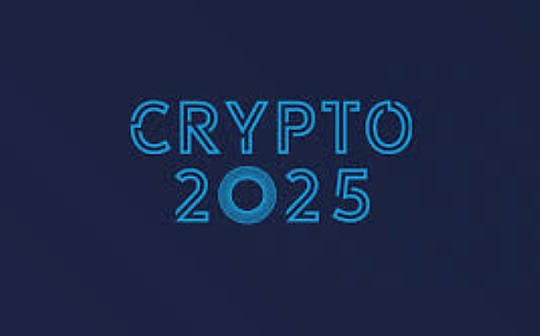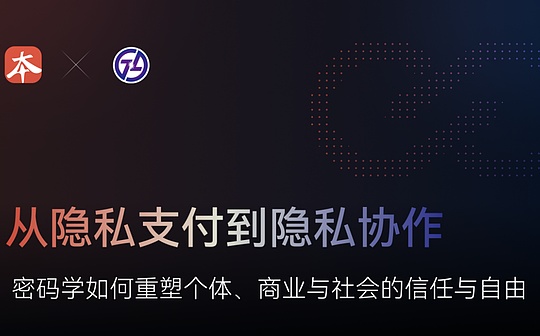
Author: Multicoin Capital; Compilation: 0xjs@Bitchain Vision
2025 is expected to be a key year for the industry.The path to the first regulatory framework that supports cryptocurrencies, coupled with the technological maturity of L1 blockchain, DeFi protocol, DePIN network and stablecoins, creates a fertile ground for the next wave of cutting-edge innovations.
In line with our traditions, we will share the ideas and opportunities that will excite us the most in the coming year.If you are building in any of these areas, please send a private message to Multicoin Partners directly.
DePIN Robotics, Zero Employees Company
Kyle Samani, founder of Multicoin
DePIN Robotics — The incoming Trump administration has been rumored to try to push autonomous driving (AD) regulations from states to national level, setting unified standards for AD companies.With GPU clusters exceeding 100,000 H100s, Transformer-based autonomous driving will prepare for the real world.After this, I expect an explosive growth in robot-based DePIN.Many startups have raised funds from non-crypto VCs, but have not really started commercializing.I am optimistic that many of them will adopt the DePIN model, spreading risk from the development company’s balance sheets to robotics professionals and production consumers around the world.Many early adopters of these robotic products will capture data that is critical to developing autonomous robots.I know there is a company in this field today—Frodobots—and I look forward to more.Our portfolio company, Hivemapper, is not a clear robotics company, is exploring many similar ideas.
Zero Employees Company-The foundation of Zero Employees Company is AI.With OpenAI’s o3 and other more advanced thinking chain reasoning models, models are reaching a level of being able to think, plan, execute and self-correct.This lays the foundation for the AI agent to perform all tasks in the business.In order for a zero-employment company to function properly, it will require human guidance, as AI inevitably makes mistakes and may go beyond its context window.Over time, I expect the level of human guidance will decrease as AI continues to improve self-correction and expand context windows.I believe that governance of these zero-employee companies may be conducted through DAO, and I expect the crypto-capital market to fund the ambitious attempts of zero-employee companies.
Startups often succeed, while large companies fail because they face unique constraints.I believe zero employee constraints will bring some incredible breakthroughs to all business operations.
On-chain securities
Tushar Jain, Co-founder of Multicoin
With the Trump administration coming to power and the Republicans’ comprehensive victory in Congress, on-chain securities finally ushered in a meaningful takeoff.
Transactions on blockchains such as Solana can be completed almost instantly, eliminating the waiting time common in traditional finance.Faster capital flows improve capital efficiency and should lead to more efficient prices.
Blockchain ensures that all participants have access to real-time, tamper-free transaction records.This transparency and security contrasts sharply with a centralized database that is opaque and sometimes risky in traditional finance.The transaction costs on the blockchain network are much lower than traditional banking systems, just compare the cost of sending stablecoins on Solana ($0.001) with the cost of sending wire transfers ($30).Solana’s token expansion now allows precise fine-grained control of tokenized securities.Issuers may limit their securities holders to whitelist addresses, recall tokens under court orders, and comply with other securities laws or transfer agent requirements or best practices.
There is no doubt that blockchain’s near-instant endurance, cheap transactions and transparency provide better settlement than the slow, expensive and opaque traditional financial track.The only real obstacle is regulation, and the SEC, which is more innovative, can open the door to securities tokenization.
I don’t think public stock issuance will become the first tokenized securities adopted by the mass market.Markets with poor liquidity, strong opacity and benefit more from tokenization are more likely to be adopted first.This could be startup equity, and when blockchain can manage capital sheets for free, there is no reason to pay Carta or Angelist to manage it.It may be a fixed income tool Figure has been researching for years.It may be an LP interest in the fund.
Buy Now, Pay Never, Spend Your Portfolio, Portfolio Margining
Spencer Applebaum, Multicoin Investment Partner
Based on Tushar’s idea, we will start to see interesting new products appear when all assets are programmable and tradeable on-chain.Here are a few examples:
Buy Now, Pay Never )——Affirm and Klarna promote the buy now, pay later concept, and I believe you have seen these widgets on Amazon and other merchant websites.Today, on-chain users can earn about 8% on SOL and about 15% on stablecoins.If users do not need to pay the subscription fee in advance, but can deposit their tokens into merchants (from web2 companies like Netflix to web3 companies like Dune Analytics), merchants will receive pledge/lending rewards over time, thenWhat will happen?The user’s token will be locked for a period of time to guarantee payment.We think there is a strong consumer psychological factor here, and the opportunity cost of benefits seems to be more acceptable than advance payments.
Direct investment portfolio—When all assets are tokenized and aggregated into one place (a web3 wallet), it makes sense that users should be able to use their portfolio to pay for medium to large items.Imagine Alice has $10,000 in BTC, $10,000 in earnings USDC, $10,000 in TSLA stock and $10,000 in gold.She wants to buy a $4,000 sofa.She doesn’t have to exchange her USDC for fiat currency, wait for bank transfers, send payments, and then perform the opposite process to rebalance her portfolio if she can automatically sell 1,000 of each of her four holdings on the chain.What happens if the dollar is paid to the sofa merchant immediately?She is still fully allocated to her existing portfolio and does not need to consider the process of rebalancing.
Portfolio Margin——In the next 3-5 years, with the advent of major cryptocurrency brokers and unified super protocols, users should be able to hold all assets across margins.For example, Alice should be able to use her AAPL stock to short the BTC perpetual contract and borrow USDC on-chain.Or should be able to use her tokenized whiskey as collateral to buy tokenized debt on the chain.We started to see this in a comprehensive way (e.g. Ostium brings Forex trading on the chain), but it all becomes clearer when spot assets are tokenized.
Verify off-chain status on-chain
Shayon Sengupta, Multicoin Investment Partner
Asset ledgers like Bitcoin and Solana are the moments when cryptocurrencies go from zero to one.These systems are fundamentally about money – they promote store of value and transfer on global, license-free tracks.We now see that the cryptographic primitives that make these systems possible begin to cross-fusion with non-ledger systems, unlocking a new net market.Over the next 12 months, encryption will become the verification layer for data and computing in three novel ways: network proof, privacy-protected data processing, and identity/media source.I think this is a convergence of monetary encryption and verification encryption—a coordination layer that will enable new economic primitives and incentive structures.
The first opportunity here is zkTLS and the market it supports.zkTLS refers to building a zero-knowledge proof in a web page through TLS signatures to verify any unit of data on the Internet in a completely non-censored, tamper-proof way (for example, your credit score on equifax or your Strava activity history).There are teams that have deployed zk proofs in network sessions to build applications that are non-censored and resistant to fraud.Our investment in p2p.me and ZkMe are early examples.p2p.me is India’s cash entrance/export which uses network proof to avoid the broken market structure in the region.ZkMe is a sovereign verification system for KYC credentials that allows applications to verify the identity of their users in a privacy-protected manner.The same primitives can be extended to dozens of new markets—systems where ticketing, booking and other frauds are the major bottlenecks in liquidity.
Secondly, all-homomorphic encryption (FHE) is about to enter its golden age.As AI systems gain diminishing returns on training on public datasets, post-training and fine-tuning in private or confidential environments will become more critical.This creates a completely new design space for coordinating otherwise inaccessible data sets as input to the model—especially as a large amount of valuable enterprise and consumer data continues to be transferred from on-premises to the cloud system.This layer of token-based incentives will be crucial, and unlocking in this area will take the SOTA basic model to the next level.
Third, in the post-AI era, identity verification and media source systems will become fixed content in consumer applications.When the cost of generating content is close to zero, large amounts of synthetic media content will make it an urgent requirement to prove the authenticity of content and identity.Early systems, such as Worldcoin, Humanity Protocol, and Humancode, used cryptographic proofs rather than biometrics or state-issued credentials to establish personality and used to mobilize participants on a large scale using token incentives as a primary call to action.Similarly, standards such as C2PA solve media source problems by tagging content at the hardware layer to distinguish the truly captured media from AI-generated media, but their widespread adoption at the application layer may requireSome form of token-based coordination.These tools are crucial to address the information hazards of AI-saturated consumer Internet.
Multiplayer gamified trading, full-stack media company
Eli Qian, Multicoin Investment Partner
Trading Goes Multiplayer – Sharing financial profits and losses and collective speculation is a very humane and highly viral behavior.People love to talk about how much they make (or lose money!) in various fields like stocks, sports betting and memecoin.However, most popular cryptocurrency, stock and sports betting trading platforms are designed for a single-person experience.Robinhood, FanDuel, BONKBot – These are not multiplayer-first experiences.Nevertheless, the need for social transactions is undeniable.Today, users create their own temporary social experiences through online forums and group chats.A large portion of Crypto Twitter revolves around these discussions.
One of the biggest advantages of cryptocurrencies is their license-free liquidity.It opens the door to a multiplayer trading tool for anyone to build crypto assets.In 2025, I’m excited to see builders leverage the virality of social transactions to create multiplayer experiences.Such a product will allow users to share transactions, compete on the profit and loss statement, and enter positions together by clicking or clicking.The design space is very broad, covering Telegram robots, Twitter Blinks, Discord applets, etc.While 2023 and 2024 have witnessed the rise of single-player tools such as BONKBot and BullX, 2025 will be a year for deals to go multiplayer.
Full Stack Media Company – People have tried to use tokens to enhance media and content many times, but few companies have achieved their full potential.However, we are starting to see the rise of media companies that control end-to-end content production, including tokens, distribution and human capital.These “full stack” media companies have the ability to push cryptographic primitives further than before.Think about it: athlete tokens, creator tokens, live broadcasts with prediction markets, etc.
An example is karate fighting.Rather than building products around existing UFC players, Karate Fighting builds a new fighting alliance from scratch, giving them more control over rules, distribution and athletes.While UFC players have limited token use, Karate Fighting allows token holders to vote on the player’s training plan, competition outfit or anything else – this is only if Karate Fighting controls token design and player contractIt’s possible.
Future live broadcasts, sports leagues, podcasts and reality shows will achieve deep vertical integration in content, distribution, tokens and human capital.I am very happy to invest and consume the next generation of token enhancement media.
The Rise of Alpha Hunter
Vishal Kankani, Multicoin Investment Partner
Something decisive happened in 2024.They herald something interesting will happen in 2025.
First, for just about $0, almost anyone can issue new tokens without permission.This has led to an eye-catching number of coins issued in the 2024 s.Most of these are memecoin, with half-life in hours.
Secondly, market sentiment fell back to high circulation, low FDV fairly distributed token issuance in 2024—reminiscent of the ICO era in 2017.In this type of market, CEXs have struggled to keep up with new listings, and we expect new listings to happen in 2025 (because of their listing process), inspiring people to go on chains and bring more liquidity to DEX.Therefore, DEX will gain market share on CEX in the coming year.As the number of tokens and DEX activity surges, active traders will need stronger tools and models to identify emerging tokens, analyze sentiment and on-chain metrics, identify vulnerabilities, reduce risks (such as rugpulls) and execute transactions efficiently——All of this is real-time.
This gives us a look at the third thing that happened in 2024: AI agents.So far, we have seen AI agents create content on social media to attract attention from their respective tokens.I expect the next iteration of AI agents will be Alpha Hunters, the people whose only job is to find alpha and trade independently in real time.
Institutional fanaticism
Matt Shapiro, Partner of Multicoin
We have just entered the beginning of the cryptocurrency institutionalization phase, and it will happen at a dazzling speed.
The crypto industry has made tremendous progress over the past five years through major technological advancements, product market fit and substantial UI/UX improvements, but the institutional community has actually stagnated in terms of encryption.The combination of regulatory and career risks has resulted in many financial institutions not being able to enter the field effectively or even provide customers with the most basic crypto products.With the U.S.-backed crypto government coming to power and the record success of BTC ETFs, we are about to see five years of institutional complacency struggling to catch up and find ways to support crypto as soon as possible.
In 2024, BTC purchase demand was $35 billion, and these demands cannot or will not be able to buy cryptocurrencies simply through Coinbase.Since most asset managers and large securities companies are still not fully launched, by 2025, more dollars will be able to buy cryptocurrencies.We will see a large number of ETFs rolling out to meet and capitalize on this need.This includes not only ETFs for new crypto assets such as Solana, but also ETFs that own multiple crypto assets, as well as ETFs that mix crypto assets with traditional assets such as gold, stocks or credit.There will be leveraged ETFs, reverse ETFs, volatility suppression ETFs, pledged ETFs, etc.Basically, all the convergence of crypto assets that you can think of for institutional and retail investors will be explored.
We will see major financial institutions competing to launch basic financial products around cryptocurrencies.Every financial institution should explore creating product lines that enable customers to trade cryptocurrency products.Financial institutions should seek to custody crypto assets and provide credit to those assets, as they do today with more traditional assets.We may also see a significant increase in stablecoin issuers.Any bank that accepts deposits should seek to issue local stablecoins.I preached with Visa’s Cuy Sheffield at the 2024 Multicoin Summit that every company needs a stablecoin strategy.Companies that used to focus on “ecommerce” are now just commerce.Stablecoins are moving in the same direction.
These are just the tip of the iceberg, and although this is not the most technologically ambitious thing in the crypto field, its scale and scope of distribution and the funds involved are huge.








